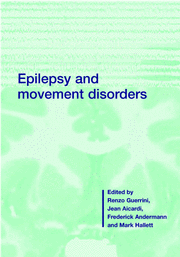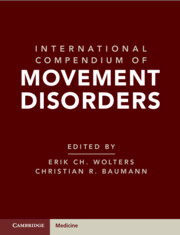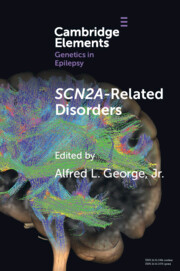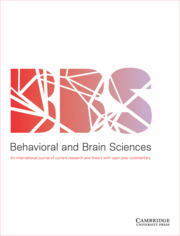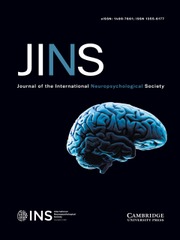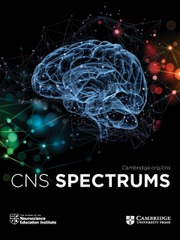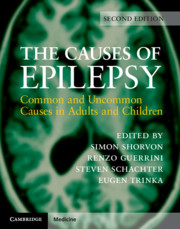Epilepsy and Movement Disorders
The boundaries between epilepsy and movement disorders are difficult to define; some syndromes or diseases may combine the two and many manifestations of one are similar to the other. For the first time, a distinguished, international team of specialists comprehensively examines the clinical, neurophysiological, genetic, pharmacological and molecular factors which underlie the relationships and differences between the two disorders. They examine the methods for investigating motor cortex excitability and the electrophysiological and chemical characteristics of epilepsies which resemble movement disorders. They present a scheme for neurophysiological classification of myoclonic epilepsies and myoclonus and give a detailed analysis of the disorders which cause diagnostic problems in children and adults. There is also an innovative, up-to-date review of the genetic syndromes which associate epilepsy and paroxysmal dyskinesias, and a review of the drugs used to treat, or which may precipitate, epilepsy and movement disorders. This is essential reading for clinicians and neuroscientists.
- First book to link epilepsy and movement disorders, describing where they differ and where they overlap
- A comprehensive overview of the clinical neurophysiology of paroxysmal motor disorders
- Provides an overview of the genetics of newly recognized syndromes featuring multiple paroxysmal neurological manifestations
Reviews & endorsements
'This is a fascinating book that has undertaken the exploration of a complex and difficult area. It will be of greatest utility to researchers who specialize in this area.' Divine.com
'Particularly worthy of mention are Jean Aicardi's chapter Alternating Hemiplegia and Alexis Arzimanoglou's chapter Motor Attacks in Sturge-Weber Syndrome … This text will interest and satisfy paediatric and adult neurologists, neurophysiologists, molecular biologists, and all other clinical neuroscientists.' European Journal of Paediatric Neurology
Product details
April 2011Adobe eBook Reader
9780511837203
0 pages
0kg
9 b/w illus. 4 colour illus. 18 tables
This ISBN is for an eBook version which is distributed on our behalf by a third party.
Table of Contents
- Preface Renzo Guerrini
- 1. Epilepsies as channelopathies Guiliano Avanzini and Louis J. Ptàcek
- 2. Epilepsy and movement disorders in the GABAA receptor ß3 subunit knockout mouse: model of Angelman syndrome Richard W. Olsen and Timothy M. DeLorey
- 3. Genetic reflex epilepsy from chicken to man: relations between genetic reflex epilepsy and movement disorders Robert Naquet and Cesira Batini
- 4. Functional MRI of the motor cortex Raphaël Massarelli, Angelo Gemignani, Michela Tosetti, Domenico Montanaro, Raffaello Cannapicchi and Claudio Munari
- 5. Neuromagnetic methods and transcranial magnetic stimulation for testing sensorimotor cortex excitability Paolo Maria Rossini, Alfredo Berardelli and Roberto Cantello
- 6. Motor dysfunction resulting from epileptic activity involving the sensorimotor cortex Renzo Guerrini, Lucio Parmeggiani, Alan Shewmon, Guido Rubboli and Carlo Alberto Tassinari
- 7. Nocturnal frontal lobe epilepsy Paolo Tinuper, Elio Lugaresi, Federico Vigevano and Samuel F. Berkovic
- 8. Motor cortex hyperexcitability in dystonia Mark Hallett
- 9. The paroxysmal dyskinesias Nardo Nardocci, Emilio Fernandez-Alvarez, Nicholas Wood, S. D. Spacey and Angelika Richter
- 10. Normal startle and startle-induced epileptic seizures Peter Brown, David Fish and Frederick Andermann
- 11. Hyperekplexia: genetics and culture-bound stimulus-induced disorders Andrea Bernasconi, Frederick Andermann and Eva Andermann
- 12. Myoclonus and epilepsy Renzo Guerrini, Paolo Bonanni, John Rothwell and Mark Hallett
- 13. The spectrum of epilepsy and movement disorders in EPC Hannah Cock and Simon D. Shorvon
- 14. Seizures, myoclonus and cerebellar dysfunction in progressive myoclonus epilepsies Roberto Michelucci, José M. Serratosa, Pierre Genton and Carlo Alberto Tassinari
- 15. Opercular epilepsies with oromotor dysfunction Javier Salas-Puig, A. Pérez-Jiménez, Ingrid I. E. Scheffer, Pierre Thomas, Bernardo Dalla Bernardina and Renzo Guerrini
- 16. Facial seizures associated with brainstem and cerebellar lesions A. Simon Harvey, Michael Duchowny, Alexis Arzimanoglou and Jean Aicardi
- 17. Neonatal movement disorders: epileptic or non-epileptic Cesare T. Lombroso
- 18. Epileptic and non-epileptic periodic motor phenomena in children with encephalopathy Giuseppe Gobbi, Antonella Pini and Lucia Fusco
- 19. Epileptic stereotypes in children Thierry Deonna, Martine Fohlen, Claude Jalin, Olivier Delalande, Anne-Lise Ziegler and Elaine Roulet
- 20. Non-epileptic paroxysmal eye movements Emilio Fernandez-Alvarez
- 21. Shuddering and benign myoclonus of early infancy Christa Pachatz, Lucia Fusco and Federico Vigevano
- 22. Epilepsy and cerebral palsy John Stephenson and Charlotte Dravet
- 23. Sydenham chorea Marjorie A. Garvey and Fernando R. Asbahr
- 24. Alternating hemiplegia of childhood Jean Aicardi
- 25. Motor attacks in Sturge-Weber syndrome Alexis Arzimanoglou
- 26. Syndromes with epilepsy and paroxysmal dyskinesia Renzo Guerrini, Lucio Parmeggiani and Giorgio Casari
- 27. Epilepsy genes: the search grows longer Antonio V. Delgado-Escueta, Marco T. Medina, Maria Elisa Alonso and G.C.Y. Fong
- 28. Genetics of the overlap between epilepsy and movement disorders Nicholas Wood, L. Kinton, M.G. Hanna
- 29. Seizures and movement disorders precipitated by drugs Olivier Dulac and Ubaldo Bonuccelli
- 30. Steroid responsive motor disorders associated with epilepsy Brian G.R. Neville
- 31. Drugs for epilepsy and movement disorders Lucio Parmeggiani, Renzo Guerrini and Brian Meldrum
- Index.

